-
BackX
-
Components
-
-
Category
-
Semiconductors
- Diodes
- Thyristors
-
Electro-insulated Modules
- Electro-insulated Modules | VISHAY (IR)
- Electro-insulated Modules | INFINEON (EUPEC)
- Electro-insulated Modules | Semikron
- Electro-insulated Modules | POWEREX
- Electro-insulated Modules | IXYS
- Electro-insulated Modules | POSEICO
- Electro-insulated Modules | ABB
- Electro-insulated Modules | TECHSEM
- Go to the subcategory
- Bridge Rectifiers
-
Transistors
- Transistors | GeneSiC
- SiC MOSFET Modules | Mitsubishi
- SiC MOSFET Modules | STARPOWER
- Module SiC MOSFET ABB’s
- IGBT Modules | MITSUBISHI
- Transistor Modules | MITSUBISHI
- MOSFET Modules | MITSUBISHI
- Transistor Modules | ABB
- IGBT Modules | POWEREX
- IGBT Modules | INFINEON (EUPEC)
- Silicon Carbide (SiC) semiconductor elements
- Go to the subcategory
- Gate Drivers
- Power Blocks
- Go to the subcategory
- Electrical Transducers
-
Passive components (capacitors, resistors, fuses, filters)
- Resistors
-
Fuses
- Miniature Fuses for electronic circuits - ABC & AGC Series
- Tubular Fast-acting Fuses
- Time-delay Fuse Links with GL/GG & AM characteristics
- Ultrafast Fuse Links
- Fast-acting Fuses (British & American standard)
- Fast-acting Fuses (European standard)
- Traction Fuses
- High-voltage Fuse Links
- Go to the subcategory
- Capacitors
- EMI Filters
- Supercapacitors
- Power surge protection
- TEMPEST emission revealing filters
- Surge arrester
- Go to the subcategory
-
Relays and Contactors
- Relays and Contactors - Theory
- 3-Phase AC Semiconductor Relays
- DC Semiconductor Relays
- Controllers, Control Systems and Accessories
- Soft Starters and Reversible Relays
- Electromechanical Relays
- Contactors
- Rotary Switches
-
Single-Phase AC Semiconductor Relays
- AC ONE PHASE RELAYS 1 series| D2425 | D2450
- One phase semiconductor AC relays CWA and CWD series
- One phase semiconductor AC relays CMRA and CMRD series
- One phase semiconductor AC relays - PS series
- Double and quadruple semiconductor AC relays - D24 D, TD24 Q, H12D48 D series
- One phase semiconductor relays - gn series
- Ckr series single phase solid state relays
- One phase AC semiconductor relays for DIN bus - ERDA I ERAA series
- 150A AC single phase relays
- Rail Mountable Solid State Relays With Integrated Heat Sink - ENDA, ERDA1 / ERAA1 series
- Go to the subcategory
- Single-Phase AC Semiconductor Relays for PCBs
- Interface Relays
- Go to the subcategory
- Cores and Other Inductive Components
- Heatsinks, Varistors, Thermal Protection
- Fans
- Air Conditioning, Accessories for Electrical Cabinets, Coolers
-
Batteries, Chargers, Buffer Power Supplies and Inverters
- Batteries, Chargers - Theoretical Description
- Modular Li-ion Battery Building Blocks, Custom Batteries, BMS
- Batteries
- Battery Chargers and Accessories
- Uninterruptible Power Supply and Buffer Power Supplies
- Inverters and Photovoltaic Equipments
- Energy storage
- Fuel cells
- Lithium-ion batteries
- Go to the subcategory
-
Automatics
- Spiralift Lifts
- Futaba Drone Parts
- Limit Switches, Microswitches
- Sensors, Transducers
-
Infrared Thermometers (Pyrometers)
- IR-TE Series - Water-proof Palm-sized Radiation Thermometer
- IR-TA Series - Handheld Type Radiation Thermometer
- IR-H Series - Handheld Type Radiation Thermometer
- IR-BA Series - High-speed Compact Radiation Thermometer
- IR-FA Series - Fiber Optic Radiation Thermometer
- IR-BZ Series - Compact Infrared Thermometers
- Go to the subcategory
- Counters, Time Relays, Panel Meters
- Industrial Protection Devices
- Light and Sound Signalling
- Thermographic Camera
- LED Displays
- Control Equipments
- Go to the subcategory
-
Cables, Litz wires, Conduits, Flexible connections
- Wires
- Cable feedthroughs and couplers
- Litz wires
-
Cables for extreme applications
- Extension and Compensation cables
- Thermocouple cables
- Connection cables for PT sensors
- Multi-conductor wires (temp. -60C to +1400C)
- Medium voltage cables
- Ignition wires
- Heating cables
- Single conductor cables (temp. -60C to +450C)
- Railway cables
- Heating cables Ex
- Cables for the defense industry
- Go to the subcategory
- Sleevings
-
Braids
- Flat Braids
- Round Braids
- Very Flexible Flat Braids
- Very Flexible Round Braids
- Cylindrical Cooper Braids
- Cylindrical Cooper Braids and Sleevings
- Flexible Earthing Connections
- PCV Insulated Copper Braids (temp. up to 85C)
- Flat Aluminium Braids
- Junction Set - Braids and Tubes
- Steel Braids
- Go to the subcategory
- Traction Equipment
- Cable Terminals
- Flexible Insulated Busbars
- Flexible Multilayer Busbars
- Cable Duct Systems
- Go to the subcategory
- View all categories
-
Semiconductors
-
-
- Suppliers
-
Applications
- CNC Machine Tools
- DC and AC Drives (Inverters)
- Energetics
- Energy bank
- Equipment and Components for Hazardous Areas [Ex]
- Equipment for Distribution, Control and Telecommunications Cabinets
- HVAC Automation
- Induction Heating
- Industrial Automation
- Industrial Protective Devices
- Machines for Drying and Wood Processing
- Machines for Thermoforming Plastics
- Mining, Metallurgy and Foundry
- Motors and Transformers
- Power Supplies (UPS) and Rectifier Systems
- Printing
- Temperature Measurement and Regulation
- Test and Laboratory Measurements
- Tram and Railway Traction
- Welding Machines
-
Assembly
-
-
Inductors
-
-
Induction devices
-
-
Service
-
- Contact
- Zobacz wszystkie kategorie
Industrial Communication Network

The fourth industrial revolution means industrial automation and modern technology which accompany every production process.
Thanks to communication systems it is possible to control the work of devices by collecting more and more data, as well as to integrate production with IT systems.
Industrial network - what is it?
Industrial network is nothing else than communication through ICT network connecting and allowing various devices to communicate in a standardized way in industrial conditions. An industrial network that provides industrial communication must be reliable so that the processes carried out can work properly. Network communication in industry is to guarantee stability and security.
Threats to the industrial network systems
An industrial network, and by extension communications, can be at risk due to the industrial conditions in which it operates, which are not the easiest. Factors that can harm an industrial network include
- pollution
- high temperatures
- humidity and vibrations
- electromagnetic interference
- dust and dirt
- long distances between devices
- fumes and oil mist
- chemical substances
- cyber threats
The data that industrial network communication uses
Industrial network communication is data of small size (for example, one word) that is transmitted very frequently. Such data are, for example:
- stop/start command
- measurement value
- value command to controller
Ethernet
Ethernet is a communication standard that dates back to the 1970s. Ethernet was created to connect networks of devices in a local area network (LAN). Since then we can find Ethernet in our homes, offices, and industrial plants. An Ethernet cable connects to a router and other equipment so that data can be transmitted. The important thing in proper functioning of Ethernet is that both ends of the cable must be at a proper distance from each other and also must not be near electrical devices. A large gap will cause problems with connection speed. Ethernet means scalability, security, low infrastructure costs, and the ability to easily integrate with IT systems.
Modbus TCP
Modbus TCP is a communication protocol that was developed on the Modbus RTU network. Data is not transmitted over serial lines, but over Ethernet, which is a standard supported by many manufacturers. It is important to note that Modbus, like Ethernet, is an open and freely available protocol, which makes it so popular. In network communication based on Modbus TCP there is a distinction between master and slave devices. The network based on this protocol offers the possibility of greater control over transmission supervision, which increases reliability and contributes to the efficiency of industrial processes.
Industrial Ethernet/IP
One example of industrial use of Ethernet is Ethernet/IP (Ethernet Industrial Protocol), which was developed by Rockwell Automation. It uses the Common Industrial Protocol (CIP). The communication that Ethernet/IP provides is a very simple complement of parameters that are stored in a database table. We can divide these messages into two types. The first type is non-critical data such as diagnostic data and in this situation we are using TCP protocol. For more prioritized data that needs to be transferred in real time, we are using UDP UDP protocol.
Profinet
Profinet is a protocol that exists in several versions with two different requirements. The first requirement, which is specific to the production plant and production line, is the transmission time. Critical data must be transmitted immediately (real time) and diagnostic data periodically. The second category we take into consideration when choosing a protocol is the compatibility with the Ethernet standard. The protocol was developed by Siemens and the PNO (Profibus User Organizer) and is also compatible with classical devices used in industrial automation.
EtherCAT
EtherCAT (Ethernet for Control Automation Technology), as opposed to single-node Ethernet, is a protocol that allows information to be sent to multiple nodes simultaneously. The actual amount of critical data that needs to be transferred in real-time is very, very small. Therefore, this protocol is unique in not dividing data into critical (priority) and less important data. It does not divide the data or give priority status to all. Its high data rate makes it a valued standard in the industry. EtherCAT is marketed by the EtherCAT Technology Group.
Powerlink
Powerlink is also one of the Ethernet standards and is a real-time protocol with a response time of less than 0.5 milliseconds. Data is transferred quickly and accurately, and it has the advantage of having no hardware requirements, Powerlink can run on standard network equipment. This standard is the fastest solution and holds the world record for network speed.
Wireless networks
In the age of wireless communication it is worth asking if Ethernet still makes sense. For industry, Ethernet is a mainstay of operations because of the undeniable stability of the network connection. Wireless internet can face problems such as signal loss. Ethernet is the solution that is the best way to network communication in industry, because every industry needs reliability and constant, uninterrupted monitoring and diagnostics of the production line.
Power over Ethernet
A very important issue is PoE or PoE+ (Power over Ethernet / +) and it is worth mentioning here. PoE is nothing more than allowing Ethernet cables to provide power to network devices as part of data transmission. It definitely simplifies the wiring of the network, reduces the area needed to build such a network and reduces the failure rate of the circuit by having fewer components.
Bluetooth and ZigBee
Wireless networking in the form of Bluetooth or ZigBee networks is primarily used in building automation and is responsible for actuators and sensors. Bluetooh works great in small networks with up to seven devices and has high reliability. ZigBee is an excellent alternative to Bluetooth and is suitable if you need to transmit data over long distances and do not care about time.
Network communication devic
- Industrial switches, PoE switches (network switches)
- Serial and fiber optic converters
- Serial port servers
- Outdoor enclosures
- Industrial connectors
- Industrial Routers
- Industrial Uninterruptible Power Supplies
- Industrial Signal Distributors
- Industrial Modems
- Network cards
- Network hubs
- Transmiters
- Network Bridges
Industrial networking components feature environmental resilience and reliability, but also real-time capability, which is critical when controlling a fleet of machines.
Industrial network communication, network communication, Ethernet, PoE, PoE+, Ethernet communication, Industrial automation, Modbus TCP Modbus RTU, Ethernet/IP, industrial Ethernet/IP, Profinet, EtherCAT, Powerlink, wireless networking, Wi-fi, Bluetooth, ZigBee, Industrial networking, networking equipment, industrial networking equipment,
Related products
Related posts
 Now available – DC/DC converters from PREMIUM
Now available – DC/DC converters from PREMIUM
 New release in DACPOL lighting for lathes – Kira covers
New release in DACPOL lighting for lathes – Kira covers




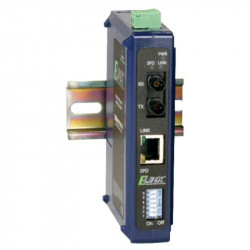
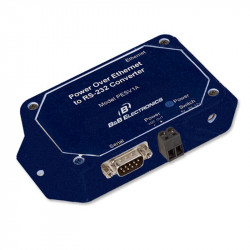
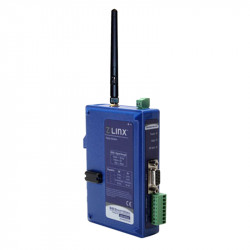
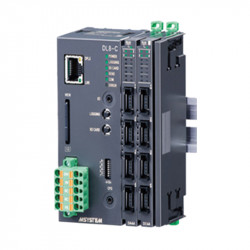
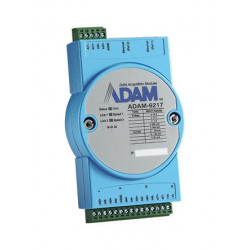
Leave a comment